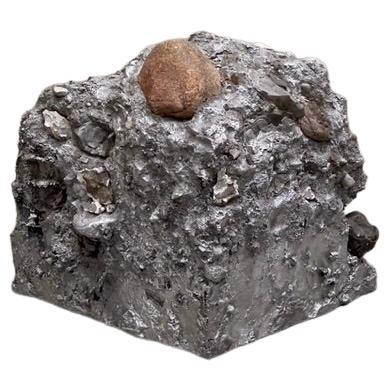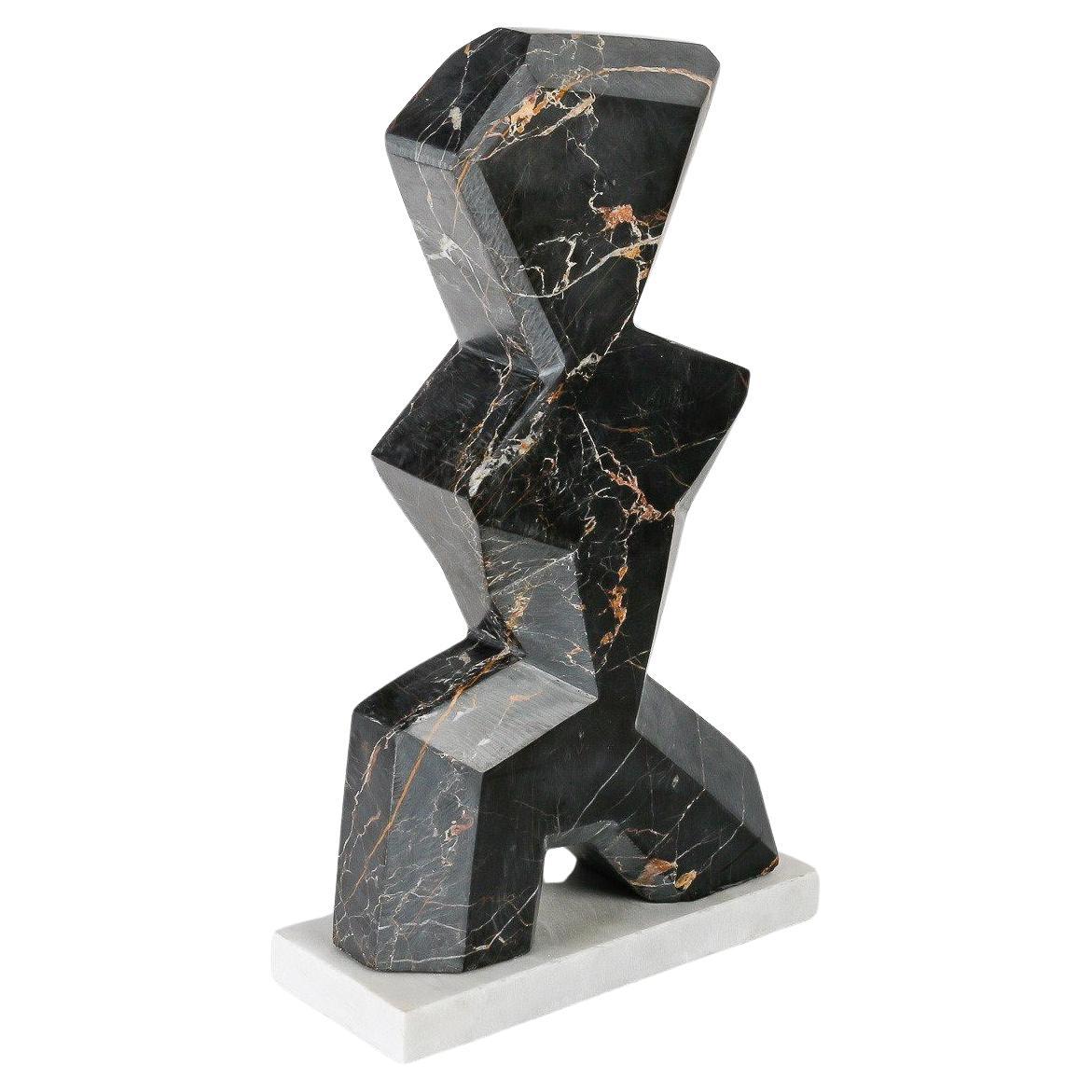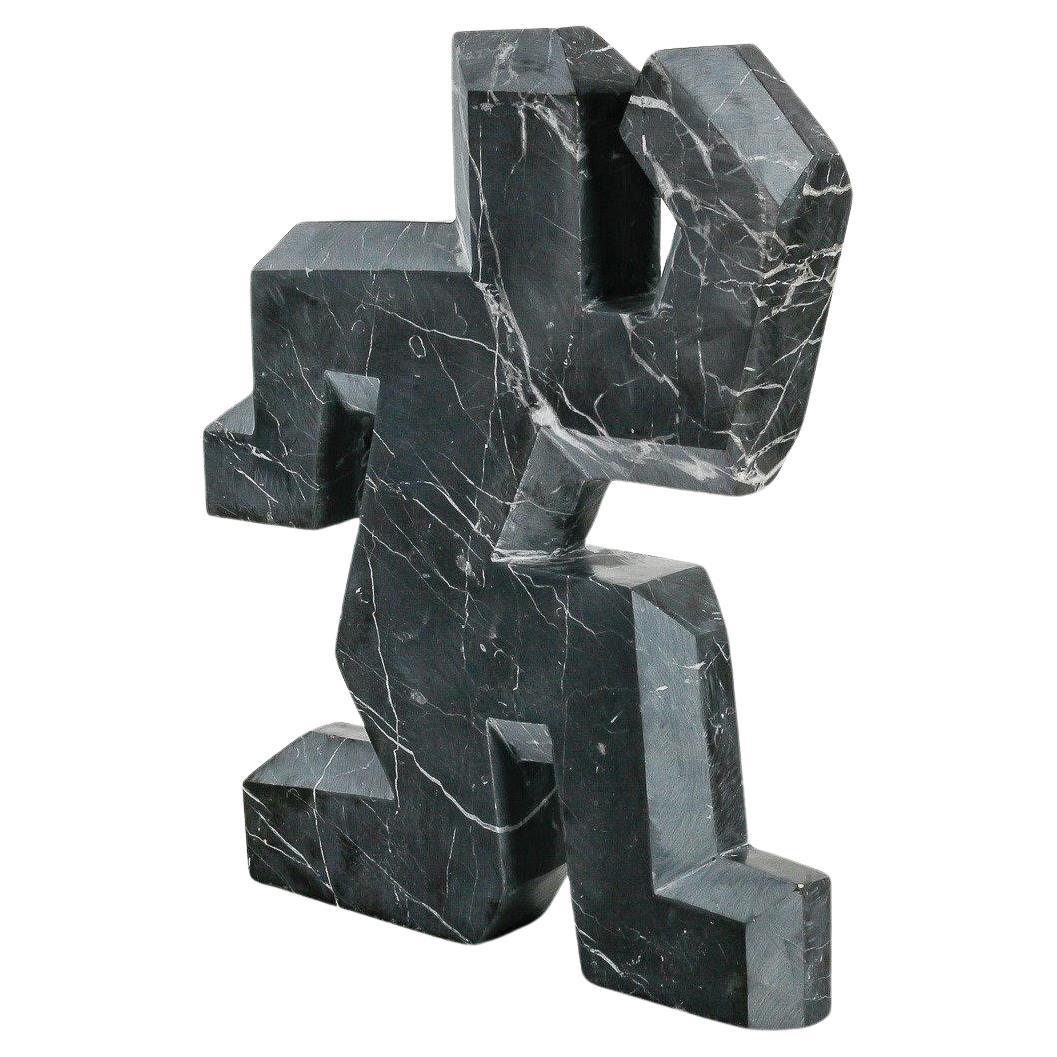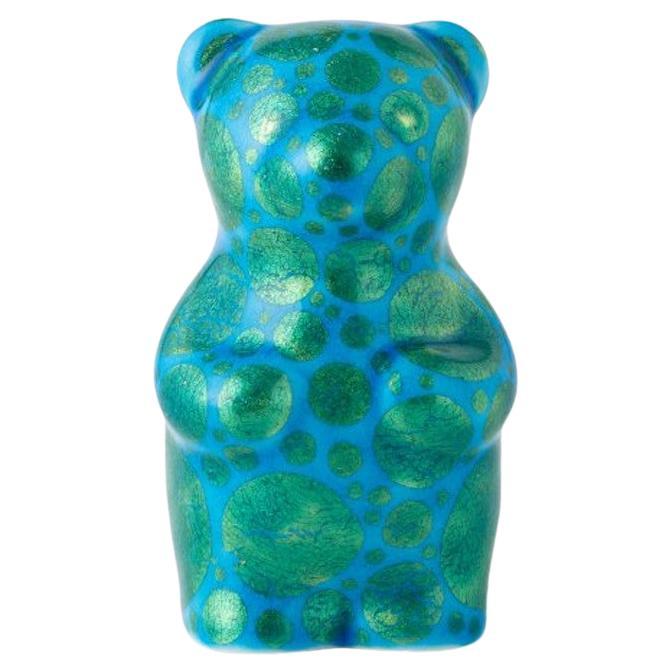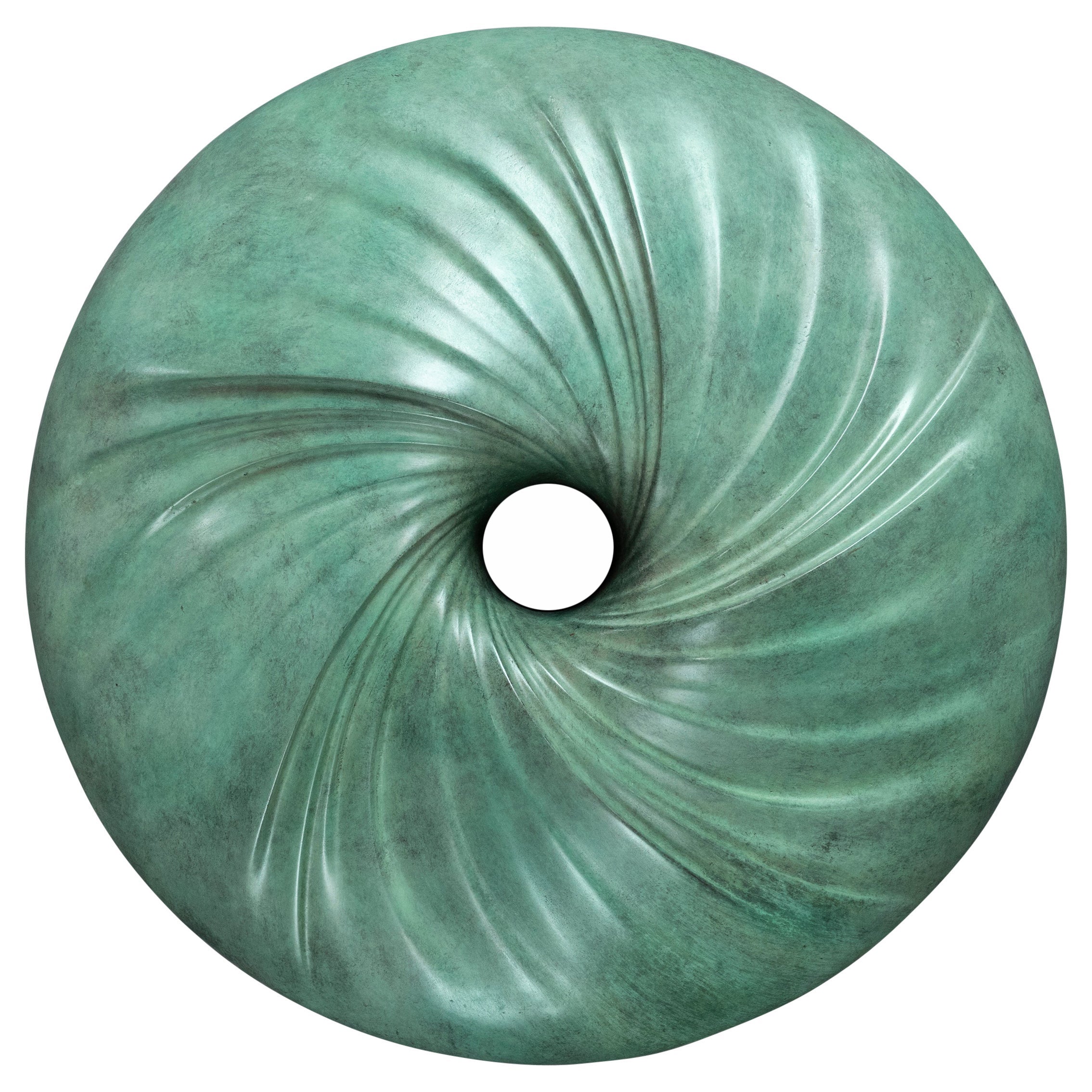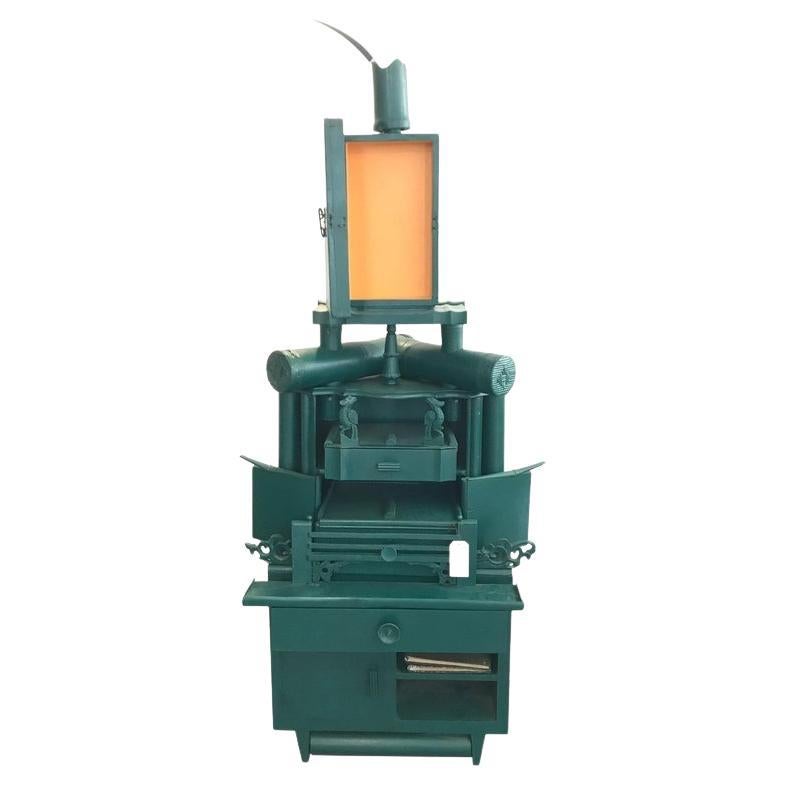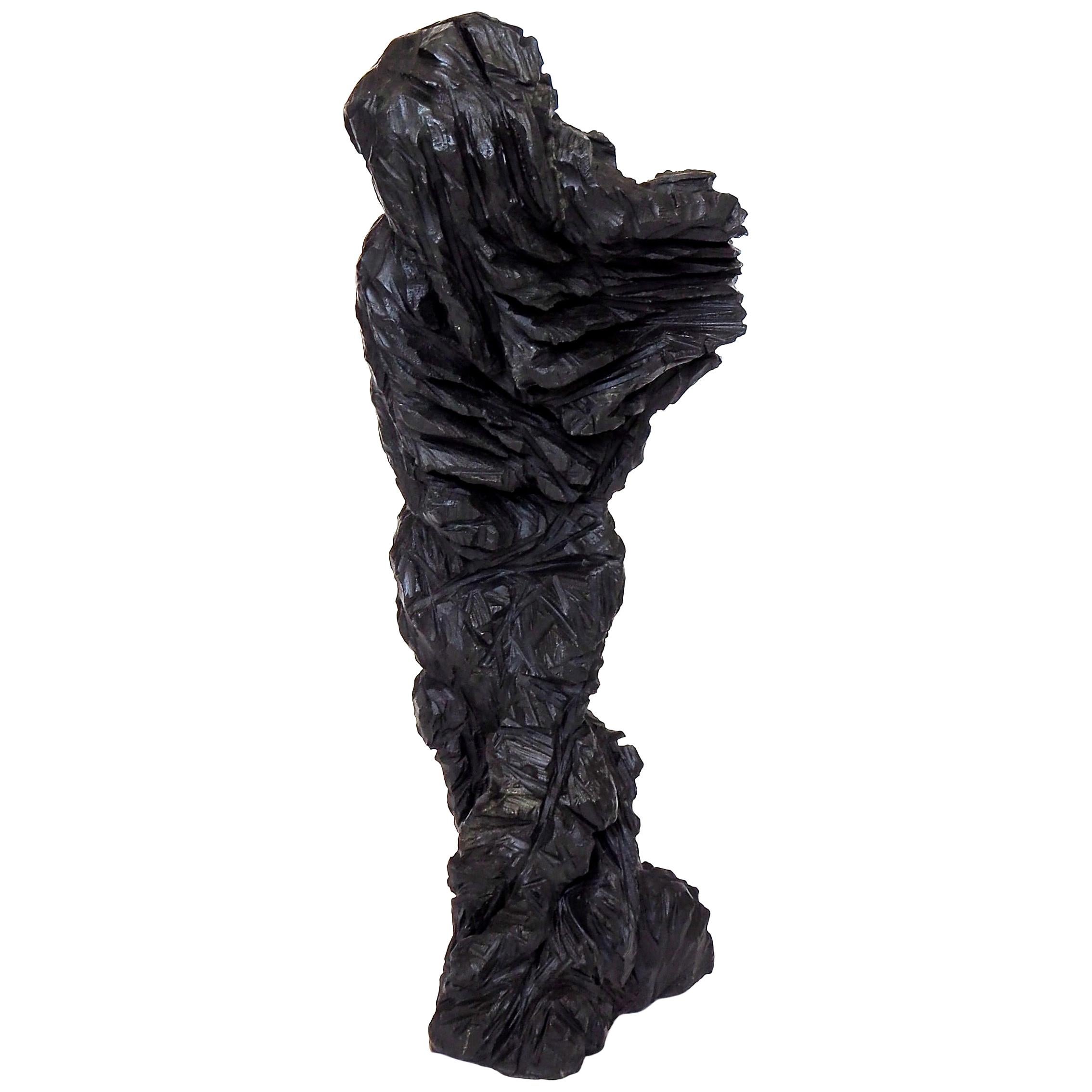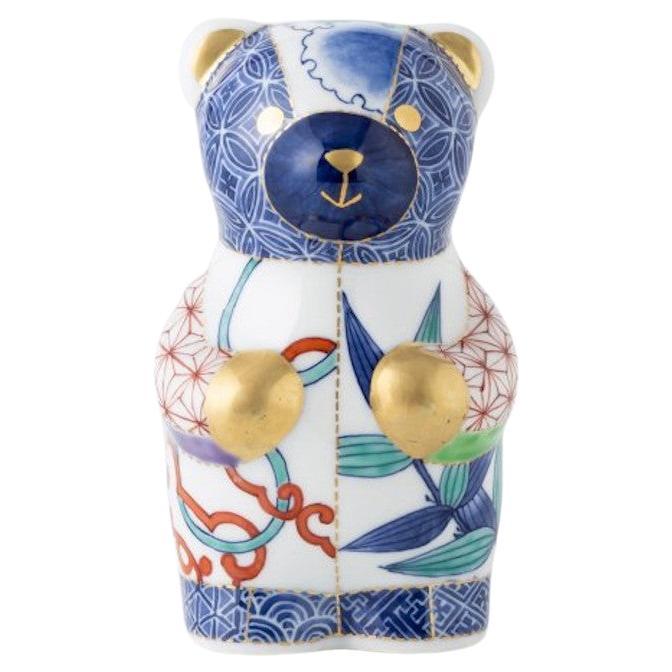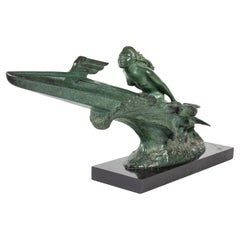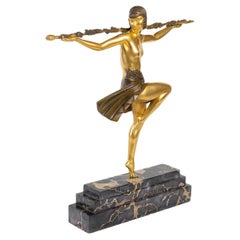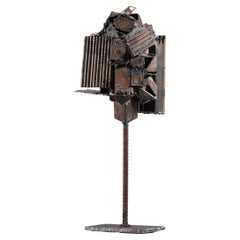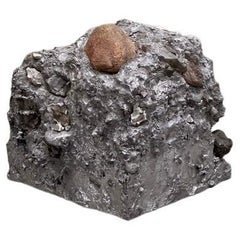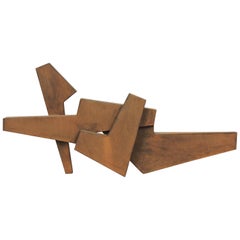
Contemporary Sculpture in by Artist MPCEM
View Similar Items
Want more images or videos?
Request additional images or videos from the seller
1 of 9
Contemporary Sculpture in by Artist MPCEM
About the Item
- Creator:mpcem (Sculptor)
- Dimensions:Height: 12.6 in (32 cm)Width: 25.6 in (65 cm)Depth: 5.91 in (15 cm)
- Materials and Techniques:
- Place of Origin:
- Period:
- Date of Manufacture:2015
- Production Type:New & Custom(One of a Kind)
- Estimated Production Time:Available Now
- Condition:
- Seller Location:Saint-Ouen, FR
- Reference Number:1stDibs: LU261236995433
About the Seller
4.9
Vetted Seller
These experienced sellers undergo a comprehensive evaluation by our team of in-house experts.
1stDibs seller since 2017
57 sales on 1stDibs
Typical response time: 1 hour
More From This SellerView All
- Frederic C.FOCHT (1879-1937) "Vitesse" An Art Deco Bronze Sculpture circa 1930By Frederic FochtLocated in Saint-Ouen, FRFrederic C.FOCHT (1879-1937) "Vitesse" circa 1930 A "Vitesse" ("Speed") green patinated bronze sculpture byFrederic C.Focht around 1930 On a black marble base. Signed "Fred C.Foch...Category
Vintage 1920s French Art Deco Figurative Sculptures
MaterialsMarble, Bronze
- Pierre Le Faguays (1892~1962) "Dancer of Thyrsus" An Art Deco Bronze FigureBy Pierre Le FaguaysLocated in Saint-Ouen, FRPierre Le Faguays (1892~1962) "Dancer of Thyrsus" An Art Deco Bronze Figure circa 1930 An iconic Art Deco cold painted gilt and patinated bronze sculpture of a semi-naked dancer hold...Category
Vintage 1920s French Art Deco Figurative Sculptures
MaterialsMarble, Bronze
- French 19th Century Large Jewelry Casket After ClodionBy Claude Michel ClodionLocated in Saint-Ouen, FRLarge Napoleon III Jewelry Casket In chiseled and silvered bronze, decorated with putti scenes in the style of Claude Michel dit Clodion (...Category
Antique 1870s French Napoleon III Decorative Boxes
MaterialsBronze
- Pair of Porcelain Vases Ormolu-Mounted in Lamps by Gagneau Paris XIXth CenturyBy Gagneau ParisLocated in Saint-Ouen, FRPair of large Japanese Porcelain Cone Shape Vases with Imari decoration Important mounts in ormolu and gilded metal, the base decorated with a laurel wreath, the upper part of falling leaves and a frieze of knotted ribbon. The mounts signed Gagneau, 115 R. Lafayette. Circa 1860 With their original aluminium bulb cover and original gilding Vase it self Height 47 cm The Gagneau Company is one of the most famous lighting factories in Paris in the nine-teenth century, established in 1800 at 25 rue d'Enghien in Paris and later at 115 rue de Lafayette. She has participated in many exhibitions throughout this century. She began in 1819 with the Exposition des Produits de l'Industrie and later participated in the Universal Exhibitions where she was part of the jury in the category of art bronzes (class 25) at the Universal Exhibition in Paris in 1889. "Imari" was simply the trans-shipment port for Arita wares, from where they went to the for-eign trading outposts at Nagasaki. It was the kilns at Arita which formed the heart of the Japanese porcelain industry. Arita's kilns were set up in the 17th century, after kaolin was discovered in 1616. A popular legend attributes the discovery to an immigrant Korean potter, Yi Sam-Pyeong (1579–1655), although most historians consider this doubtful. After the discovery, some kilns began to produce revised Korean-style blue and white porcelains, known as Early Imari, or "Shoki-Imari". In the mid-17th century, there were also many Chinese refugees in northern Kyushu due to the turmoil in China, and it is said that one of them brought the overglaze enamel coloring technique to Arita. Thus Shoki-Imari developed into Ko-Kutani, Imari, and later Kakiemon, which are sometimes taken as a wider group of Imari wares. Ko-Kutani was produced around 1650 for both export and domestic market.Kutani Ware is characterized by vivid green, blue, purple, yellow and red colors in bold designs of landscapes and nature. Blue and white porcelain pieces continued to be produced and they are called Ai-Kutani. Ko-Kutani Imari for the export market usually adopted Chinese design structure such as kraak style, whereas Ai-Kutani for the domestic market were highly unique in design and are ac-cordingly valued very much among collectors. Ko-Kutani style evolved into Kakiemon-style Imari, which was produced for about 50 years around 1700. Kakiemon was characterized by crisp lines, and bright blue, red and green designs of dramatically stylized floral and bird scenes. Imari achieved its technical and aes-thetic peak in the Kakiemon style, and it dominated the European market. Blue and white Kakiemon is called Ai-Kakiemon. The Kakiemon style transformed into Kinrande in the 18th century, using underglaze blue and overglaze red and gold enamels, and later additional colors. Imari began to be exported to Europe when the Chinese kilns at Jingdezhen were damaged in the political chaos and the new Qing dynasty government halted trade in 1656–1684. Ex-ports to Europe were made through the Dutch East India Company, and in Europe the des-ignation "Imari porcelain" connotes Arita wares of mostly Kinrande Imari. Export of Imari to Europe stopped in mid-18th century when China resumed export to Europe, since Imari was not able to compete against Chinese products due to high labor costs. By that time, however, both Imari and Kakiemon styles were already so popular among Eu-ropeans that the Chinese export porcelain copied both, a type known as Chinese Imari. At the same time, European kilns, such as Meissen and English potteries such as Johnson Bros. and (Royal) Crown Derby, also imitated the Imari and Kakiemon styles. Export of Imari surged again in late 19th century (Meiji era) when Japonism flourished in Europe.Thus, in the western world today, two kinds of true Japanese Imari can...Category
Antique 1880s French Japonisme Table Lamps
MaterialsBronze
- "Ce qu'évoquent les Livres" by Émile Aubry '1880-1964'By Louis AubryLocated in Saint-Ouen, FR"Ce qu'évoquent les Livres" Allegory of the Literature Oil on canvas Signed on the lower part beside parchment 111 x 133 x 2 cm Framed 125 x 146 x 7 cm Provenance: Collection Georges AUBRY, brother of the artist Bibliography: Illustrated in catalogue «Regards de peintre» , Suzanne AUBRY-CASANOVA, 1997, p.104 After trying years of forced confinement due to the war, he composed this allegorical fresco on the theme of Literature, Science and Arts was painted by Émile Aubry for his younger brother Georges Aubry, who had intended it for his library. This work, composed on the theme of the book it symbolizes, in its diversity by allegorical characters, he cannot help ordering the painting around Art, which he places at the top of the scale of human...Category
Vintage 1940s French Art Deco Paintings
MaterialsCanvas
- A French Napoléon III Ormolu Cartel Clock by Susse Frères Paris circa 1870By Susse FreresLocated in Saint-Ouen, FRA French 19th Century Cornucopia Gilt-Bronze Cartel, by Susse Frères Paris An Ormolu Cartel in the shape of an escutcheon, with a circular white enamel dial, signed Susse Frères/A Paris, Arabic numerals for the hours and for the minutes. It's bordered by a frieze of pearls and surmounted by a falling laurel knot with a drapery in the lower part and flanked by cornucopias adorned with flowers and fruits. Rectangular base decorated with a garland of knotted flowers dying in a tapered, fluted barrel and damping, in the upper part, a flowery Medici vase. Louis XVI Style Circa 1870 Original gilding uncleaned The Susse company, a worldwide reknown foundry, began to cast pieces as soon as the first half of the 19th Century. Awarded medals...Category
Antique 1860s French Louis XVI Wall Clocks
MaterialsOrmolu
You May Also Like
- Brutalist sculpture by artist Donna in steelLocated in Lyon, FRSculpture in patinated steel by artist Donna in a Brutalist style. The entire sculpture is hand-crafted with steel parts welded together. Very graphic, modern work. Unique piece, sig...Category
Early 2000s French Brutalist Abstract Sculptures
MaterialsSteel, Iron
- Contemporary Metal Sculpture Artist Signed, 2008Located in Miami, FLContemporary Metal sculpture on black metal base signed by unknown artist and dated.Category
21st Century and Contemporary Unknown Modern Abstract Sculptures
MaterialsMetal
- Contemporary Cast Aluminium Sculpture by Danish Artist Marianne HesselbjergLocated in København K, 84Title: Cups and squares and a cone, -or an attempt to create a perfect cube. 2021 Cast aluminium (into the crust of the earth) Marianne Hesselbjerg (b.1949) "Marianne Hesselbjerg is making...Category
2010s Danish Brutalist Abstract Sculptures
MaterialsAluminum
- Contemporary Marble Sculpture by Artist François Fernandez, Circa 2001.Located in Saint-Ouen, FRContemporary Marble Sculpture by Artist François Fernandez, known as SAVY, Circa 2001. Marble sculpture by the artist François Fernandez, known as Savy, signed SAVY and dated 2001. ...Category
21st Century and Contemporary French Modern Abstract Sculptures
MaterialsMarble
- Contemporary Marble Sculpture by Artist François Fernandez, Circa 2000.Located in Saint-Ouen, FRContemporary Marble Sculpture by Artist François Fernandez, known as SAVY, Circa 2001. Marble sculpture by the artist François Fernandez, known as Savy, signed SAVY and dated 2001. ...Category
21st Century and Contemporary French Modern Abstract Sculptures
MaterialsMarble
- Japanese Contemporary Blue Green Porcelain Bear Sculpture by Artist, 2Located in Takarazuka, JPExtraordinary Japanese contemporary porcelain bear sculpture, intricately hand-painted in blue and green in an auspicious traditional Japanese "yuri kinsai" technique in which the go...Category
21st Century and Contemporary Japanese Meiji Animal Sculptures
MaterialsGold Leaf


